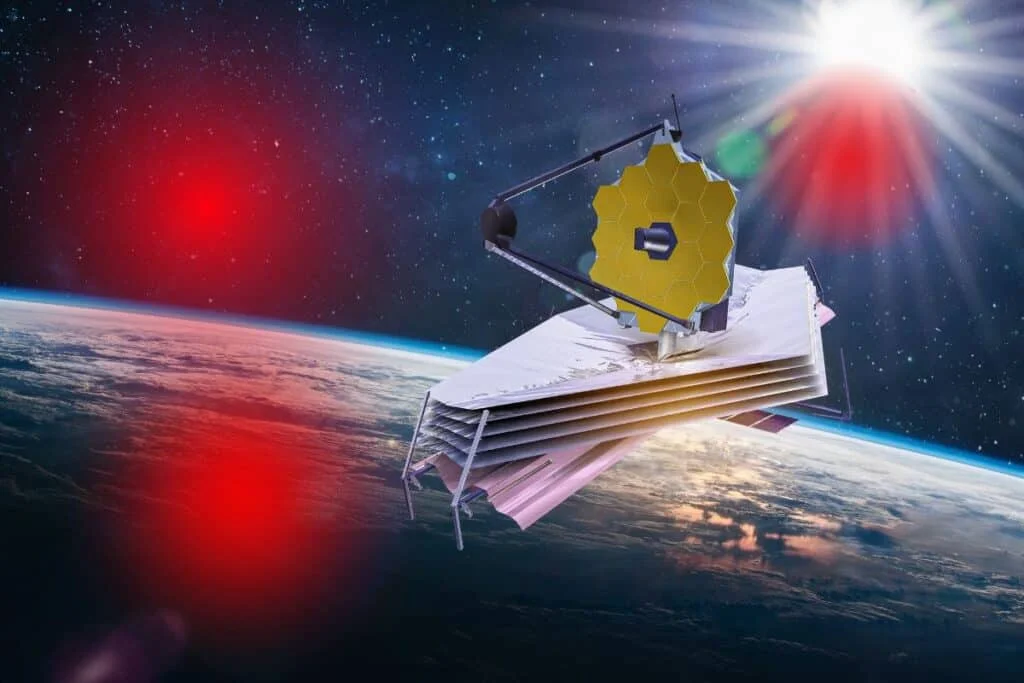
JWST Rewrites Cosmic History: New Most Distant Galaxy MoM-z14 Shatters Records
The James Webb Space Telescope (JWST) continues to revolutionize our understanding of the early universe, breaking its own records with the discovery of MoM-z14, the new most distant galaxy known to humanity. Announced on May 16, 2025, this groundbreaking find offers unprecedented insights into the formation and evolution of galaxies in the early cosmos.
Before JWST began science operations in 2022, only one confirmed galaxy from the first 500 million years of cosmic history was known: GN-z11, discovered by the Hubble Space Telescope. Now, GN-z11 isn't even in the top 10 for most distant galaxies, thanks to JWST's superior capabilities. The telescope has uncovered hundreds of luminous, early galaxies, far exceeding initial expectations.
MoM-z14 surpasses JADES-GS-z14-0 as the most distant galaxy. This record-breaking galaxy was initially imaged photometrically at various near-infrared wavelengths. Due to the presence of neutral hydrogen in the early universe, light with wavelengths shorter than ~121 nanometers is absorbed. But after being stretched by the expansion of the Universe, its presence could then be observed.

Spectroscopic follow-up confirmed galaxy MoM-z14 has a redshift of z = 14.44, establishing a new cosmic distance record. This means the light from this galaxy, originally emitted with a specific wavelength, is observed on Earth at a wavelength 15.44 times greater. The light, initially ultraviolet, stretched into the infrared over 13.5 billion years, now appears at 1.88 microns.
This redshift corresponds to an age of approximately 282 million years after the Big Bang, just 2.0% of the Universe's current age. The galaxy is currently located approximately 33.8 billion light-years away from us, making it the most distant object ever discovered. MoM-z14 itself has a diameter of 500 light-years and a mass of approximately 100,000,000 Suns.
One striking feature of MoM-z14 is its dust-free nature. Typically, Active Galactic Nuclei (AGNs) enhance galaxy brightness by injecting energy into an accretion disk, but this leads to a shallower ultraviolet slope and a spatially extended appearance. The data from MoM-z14 indicates that AGNs are not the dominant light source, suggesting there may be no evidence of a central supermassive black hole. This implies a recent episode of intense star formation within the galaxy.
The evidence suggests that the star-formation rate in MoM-z14 underwent a rapid increase over the past 10 million years, with elevated values for at least the last 3-4 million years. This explains the large equivalent widths of the detected emission lines, the high degree of ionization, and the high inferred gas density. Most of the light we observe from this galaxy comes from stars that have recently formed, signifying a burst of cosmic activity.
![Two scatter plots show galaxy size versus redshift (left) and versus EW (right), comparing "Weak NIV] + Extended" (orange) and "Strong NIV] + Compact" (blue) samples, including a JWST record distant galaxy candidate.](https://imgsnewscdntoanle.sfo3.cdn.digitaloceanspaces.com/2025/05/twopops_1747828691.webp)
These findings contribute to the larger puzzle of unusually large numbers of bright, ultra-distant galaxies in the early Universe, which challenge our prior predictions. Why is there so little neutral gas present in this region so early on? Is it possible that the intergalactic medium surrounding this object became fully ionized hundreds of millions of years earlier than elsewhere? The study of MoM-z14, the first result from the “Mirage or Miracle” survey to spectroscopically test the parameters of these luminous galaxies, allows one to be confident that many of the early “little red dot” galaxies that are out there are going to show little evidence for large AGN contributions, and will instead be compact and dominated by a burst of recent star-formation.
Future observations of MoM-z14 and other galaxies at similar distances will provide a clearer understanding of how the Universe grew up to become what it is today. What will it become? Join the discussion and share your thoughts in the comments below!